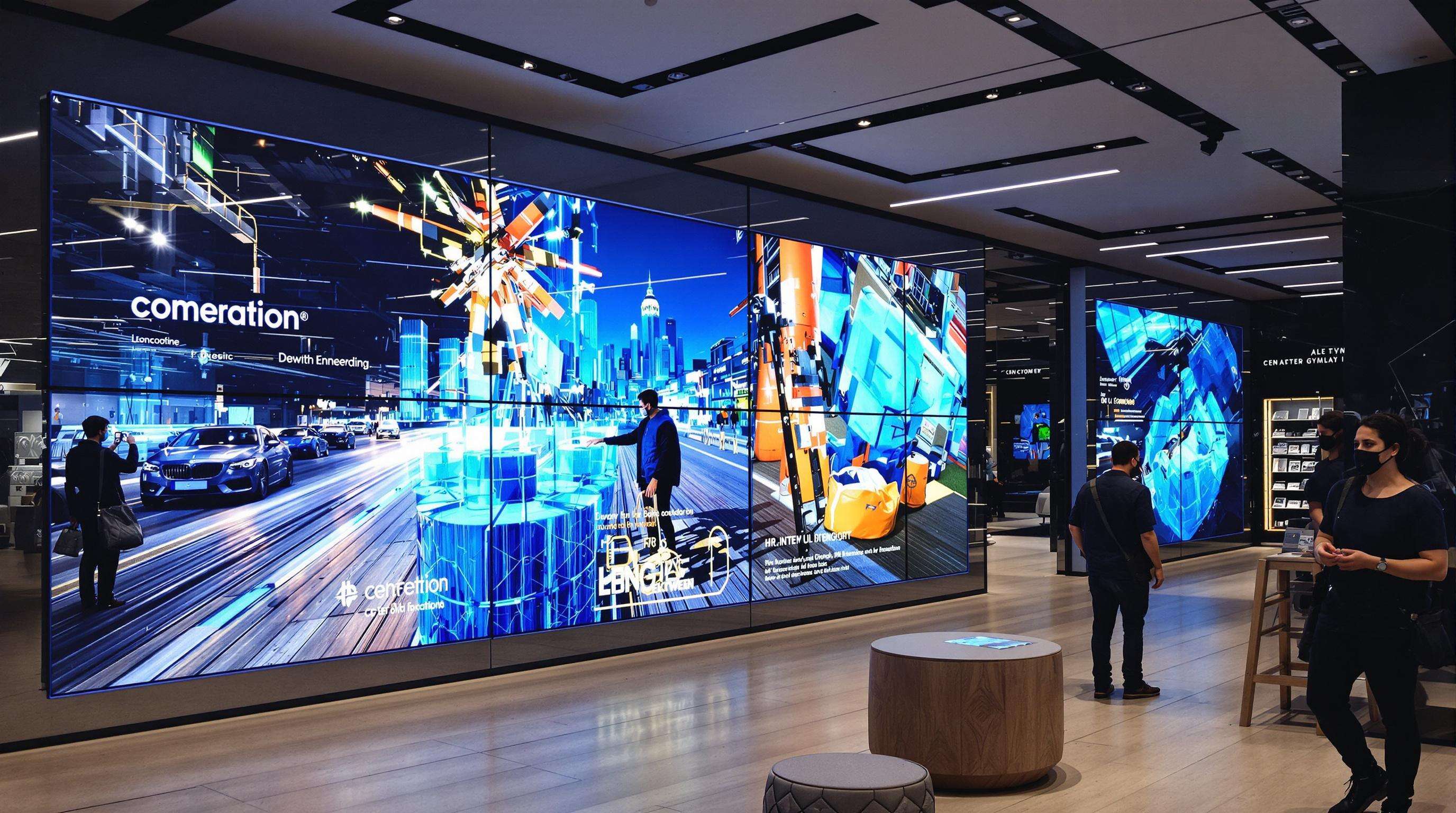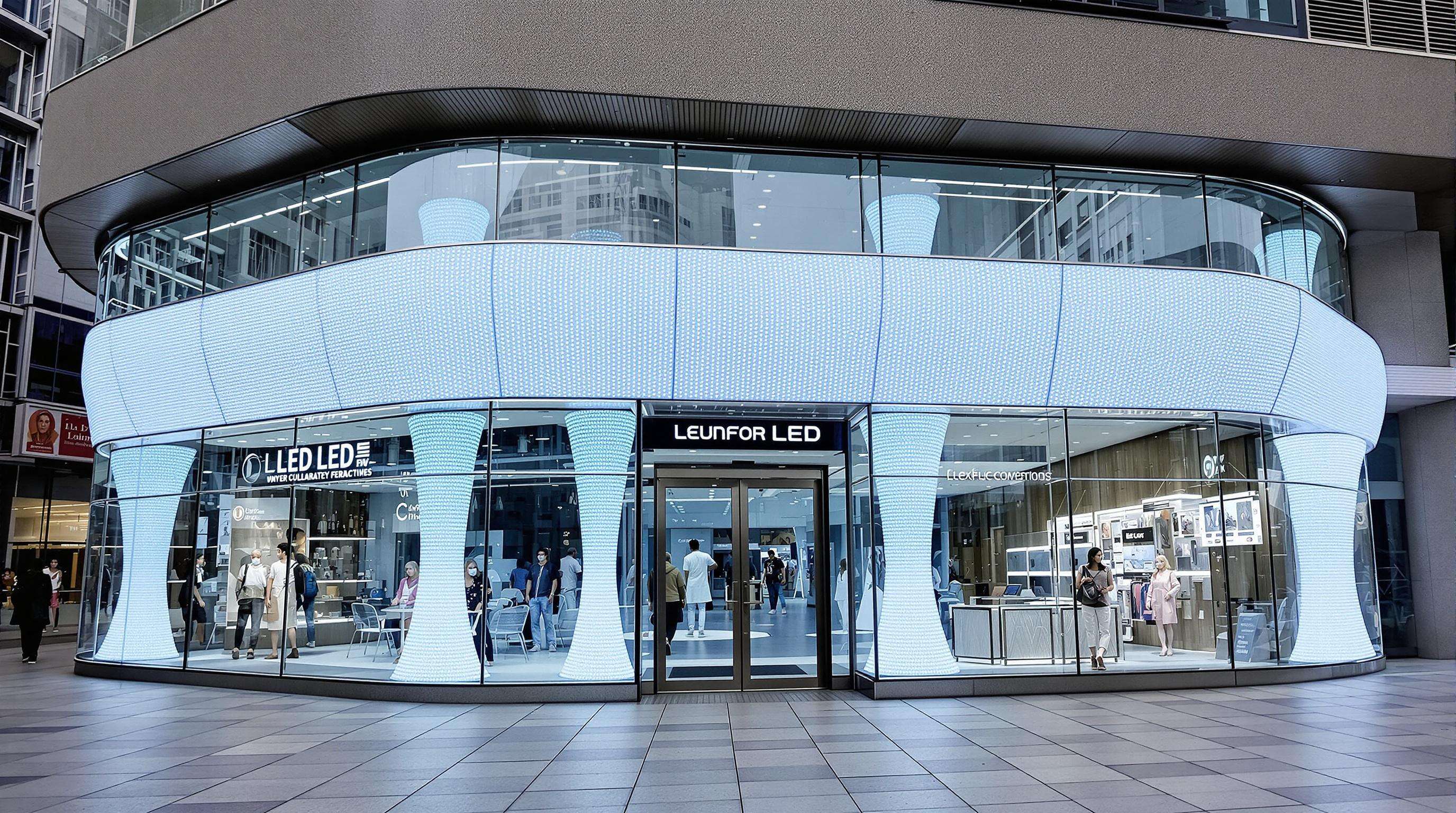LED Panels in Digital-Out-of-Home (DOOH) Advertising Networks
The Rise of DOOH Advertising Using LED Panels for Advertising
LED panels are really taking off as the mainstay of today's Digital-Out-of-Home (DOOH) advertising networks. The numbers tell the story too - American advertisers spent over 3.6 billion dollars on these displays just last year alone. What's driving this trend? Well, many city governments have been swapping out those old static billboards at an impressive rate. Since 2022, about 78 percent of them have made the switch to LED technology because it lets operators update content remotely and track who actually sees the ads. Take a walk through most urban areas now and chances are better than three quarters that whatever digital screens catch your eye are connected via cloud systems. These setups make it possible for marketing teams to run coordinated campaigns simultaneously across train stations, bus stops, and shopping centers throughout entire metropolitan regions. The fact that so many businesses are adopting this approach speaks volumes about how scalable and cost effective LED technology has become for large scale operations.
High-Brightness LED Displays for Sunlight Visibility in Outdoor Environments
Next-gen LED billboards achieve 5,000–10,000 nits brightness through micro-lens arrays and liquid cooling, ensuring readability even under direct sunlight. These displays maintain color accuracy across 160° viewing angles while reducing power consumption by 40% compared to 2019 models, making them ideal for 24/7 operation in high-traffic zones.
Case Study: Times Square’s Transition to Ultra-HD LED Billboards
Between 2021–2023, 83% of Times Square’s iconic billboards upgraded to 8K LED panels. The shift enabled 15-second ad rotations—replacing 30-day static leases—and increased foot traffic dwell time by 37%. Brands like Coca-Cola and Netflix reported 22% higher recall rates versus traditional formats, highlighting the impact of dynamic, high-resolution content.
Trend: Programmatic DOOH Advertising and Real-Time Media Buying
Programmatic platforms now control 35% of premium LED inventory, using AI to pair ads with live weather, traffic, and mobile proximity data. This automation allows advertisers to adjust creatives within 15-minute windows, improving conversion rates by 58% compared to fixed campaigns.
Interactive and In-Store LED Panels for Retail Engagement

Retailers increasingly deploy LED panels for advertising to create immersive, data-driven shopping environments. These displays bridge digital interactivity with physical retail spaces, transforming passive browsing into dynamic brand experiences.
Touch-Enabled LED Walls and Customer Experience in Retail Advertising
Retail stores these days are getting pretty fancy with their tech setups. Many have those big touchscreens where people can explore products using hand gestures and even try things on virtually. According to Retail Tech Insights from last year, around two thirds of shoppers actually spend about 40 percent longer looking at these interactive screens than they do at regular signs. Take sports apparel companies for instance. Some top brands now install massive LED panels from floor to ceiling that allow customers to tweak sneaker designs right there on the spot. This kind of customization seems to work wonders too since stores report roughly a 28% increase in sales when offering personalized options. Customers just love being able to create something unique while they shop.
AR Integration with LED Panels for Immersive In-Store Experiences
With augmented reality (AR) overlays on LED screens, shoppers can now see what furniture would look like at home or test out different makeup shades without touching anything physical. One upscale beauty store saw something pretty impressive happen when they installed those fancy AR mirrors that show how cosmetics look under various lights. Their return rate dropped by about 35% overnight. What makes these mixed reality experiences work so well? They combine the hands-on feeling of shopping with all the ease of digital tech, which keeps people hanging around stores longer too. The average customer spends roughly 22% more time browsing each time they come in.
Retail Media Networks and Programmatic In-Store Advertising Optimization
LED networks that work programmatically adjust what they show based on how many people are walking by, what's left in stock, and even the weather outside. Take one big grocery store chain for example they put those smart LED displays at the ends of aisles to push umbrellas when it rains and sunscreen whenever the sun comes out. The results? Their sales went up around 18% compared to regular promotions. Most retail media companies are shifting their money these days too about 40% of in-store advertising budgets now go toward these changing LED ads instead of sticking with old fashioned static schedules. Makes sense really, since nobody wants to see a summer promotion in December anymore.
Innovative LED Form Factors: Transparent, Flexible, and 3D Displays

Transparent LED Glass for Aesthetic and Functional Storefront Advertising
Stores across the country are starting to adopt these see-through LED panels that blend digital ads right into their building designs. The panels let about 80 something percent of light pass through thanks to carefully placed LED strips, so shop owners can run flashy promotions without making their windows look completely blocked off. According to some market research from last year, we should expect around 40% more of these transparent displays hitting stores over the next few years, especially in upscale shopping areas and modern office buildings. What makes this tech appealing is how it keeps storefronts looking clean and professional while still letting businesses put out bright, power saving advertisements that grab attention without being obnoxious.
Flexible and Curved LED Panels for Creative Brand Installations
Bendable LED panels are changing the game when it comes to designing ads. Made with lightweight flexible PCBs, these screens can wrap around all sorts of surfaces from round columns to weird shaped objects. They work great for things like wrapping around pillars, building tunnel experiences, or setting up branded displays that really stand out. The latest improvements in how they handle heat and connect modules together mean we can now get those smooth 180 degree curves without any gaps. This makes LED advertising panels much better suited for strange spaces where traditional flat screens just wouldn't fit, especially at temporary event setups and those interactive marketing displays people love so much these days.
Case Study: Louis Vuitton’s Use of Transparent LED Screens in Flagship Stores
Recently, a top name in luxury fashion put 9mm pitch transparent LED glass in five of their flagship stores throughout Europe. The setup let them display seasonal collections with these cool animated holograms floating over the windows, all while keeping the original architecture intact that customers love so much. Results were pretty impressive too foot traffic went up around 23%, and people started talking about the stores online almost 60% more than before when they just had regular displays. So basically, these LED panels aren't just flashy tech gadgets they actually help tell the brand's story better without messing up the look and feel of the stores themselves.
Future Trends: Glasses-Free 3D and Holographic LED Panels in Brand Activations
New lenticular lens tech is making it possible to see 3D effects without glasses on those big LED billboards we see everywhere now. Some companies testing this stuff have already gotten prototypes working with about 160 degree viewing angles, which means people can walk past them from almost any direction and still catch the 3D magic. At the same time, makers are putting together these cool hybrid systems combining LEDs with holography. Imagine seeing a company mascot floating in mid air or getting a virtual peek inside products as they pass by. The numbers back this up too the 3D display market is expected to grow at around 28 percent each year until 2027 according to industry reports. All these developments point to a future where ads aren't just seen but experienced in ways that engage multiple senses, thanks to all sorts of fancy LED technologies coming online.
AI-Powered and Data-Driven LED Advertising for Real-Time Optimization
AI-Powered LED Billboards Using Audience Analytics for Dynamic Content
The latest LED billboards aren't just flashy anymore they actually use artificial intelligence and computer vision tech to figure out who's looking at them, what the weather looks like outside, and sometimes even read faces as people pass by. According to some research from Nielsen back in 2023, ads that change their content based on these factors get remembered about 34 percent better than regular old static advertisements. Big name stores such as Macy's have started rolling out smart displays that know when to show swimsuits versus winter coats depending on current temperatures and how busy the sidewalk happens to be at any given moment.
Programmatic Advertising Integration with Real-Time Consumer Behavior Data
Modern programmatic advertising connects with things like mobile phone locations, what's trending on social media, and point-of-sale information to tweak LED campaigns while they're still running. Retailers actually send special offers to people walking past stores who happen to type in relevant search terms on their phones. According to some research from ICSC back in 2024, this approach boosted store visits by about 19%. The whole system works like a feedback machine that lets marketers shift money around between different store locations every few hours without messing up the overall brand message that customers see everywhere.
Privacy Concerns in Data-Driven LED Advertising: Balancing Personalization and Ethics
Most marketing efforts still rely on anonymized aggregate data, but there's growing concern among people about privacy issues. According to a Pew Research survey from 2023, around 62 percent of consumers actually express worries regarding facial recognition technology used in public advertisements. Big names in the industry are starting to incorporate Privacy by Design principles into their operations these days. They're making changes like obscuring personal details during AI processing and giving folks straightforward ways to say no to location tracking services. Looking ahead, the Network Advertising Initiative released some new guidelines back in 2024 suggesting companies limit audience segmentation to just three different data points as a way to avoid going too far with personalized targeting.
FAQ Section
What are the benefits of using LED panels in DOOH advertising?
LED panels offer remote content updates, high visibility with brightness control, and reduced power consumption. They also provide dynamic and scalable advertising solutions for large scale campaigns.
How do next-gen LED displays maintain visibility in direct sunlight?
Next-gen LED displays achieve high brightness (up to 10,000 nits) through micro-lens arrays and are equipped with liquid cooling to ensure readability and color accuracy under direct sunlight.
What role does AI play in modern LED advertising?
AI is used to adjust content based on real-time data like weather and audience, enhancing viewer engagement and conversion rates compared to static ads. It also facilitates programmatic buying and personalization.
How are privacy concerns being addressed in data-driven LED advertising?
Companies are incorporating Privacy by Design principles, such as using anonymized data and offering opt-out options for location tracking, to balance personalization with ethical considerations.




